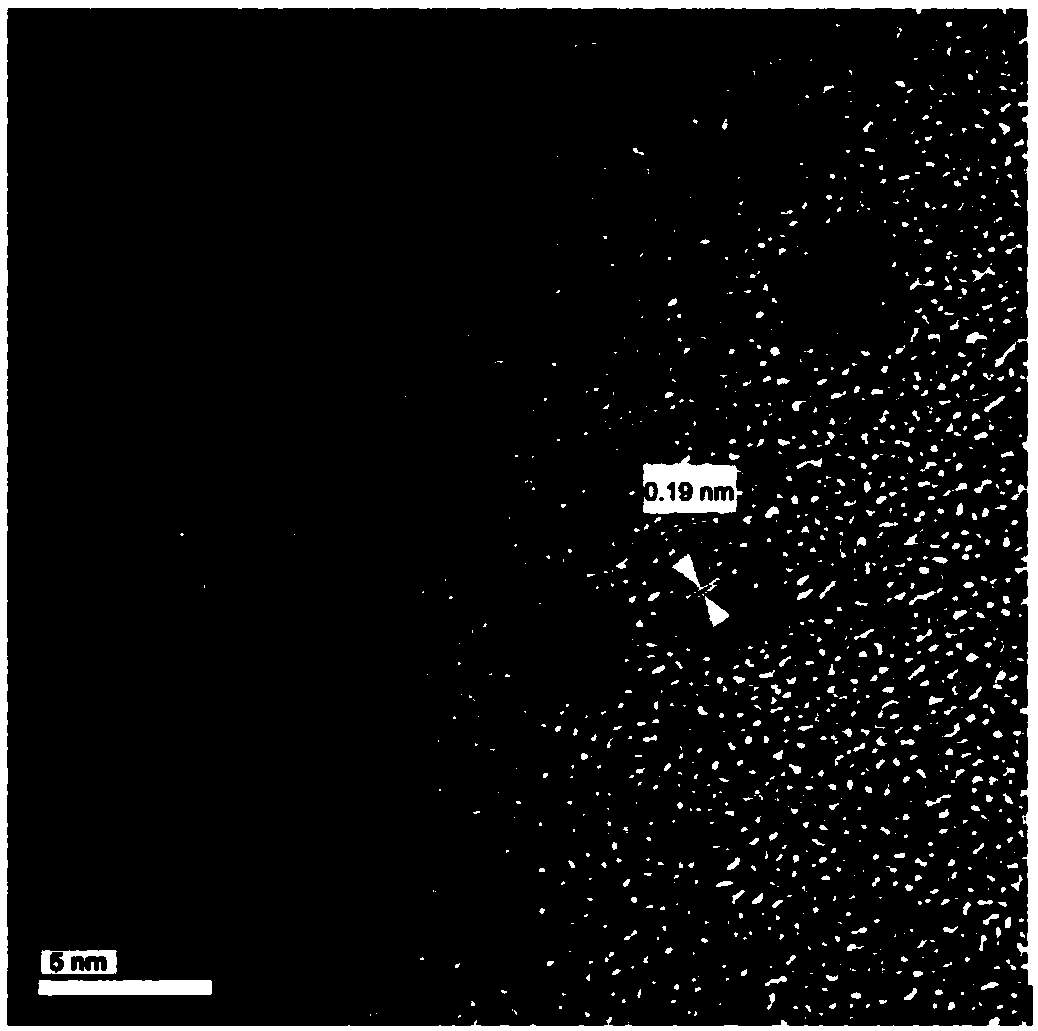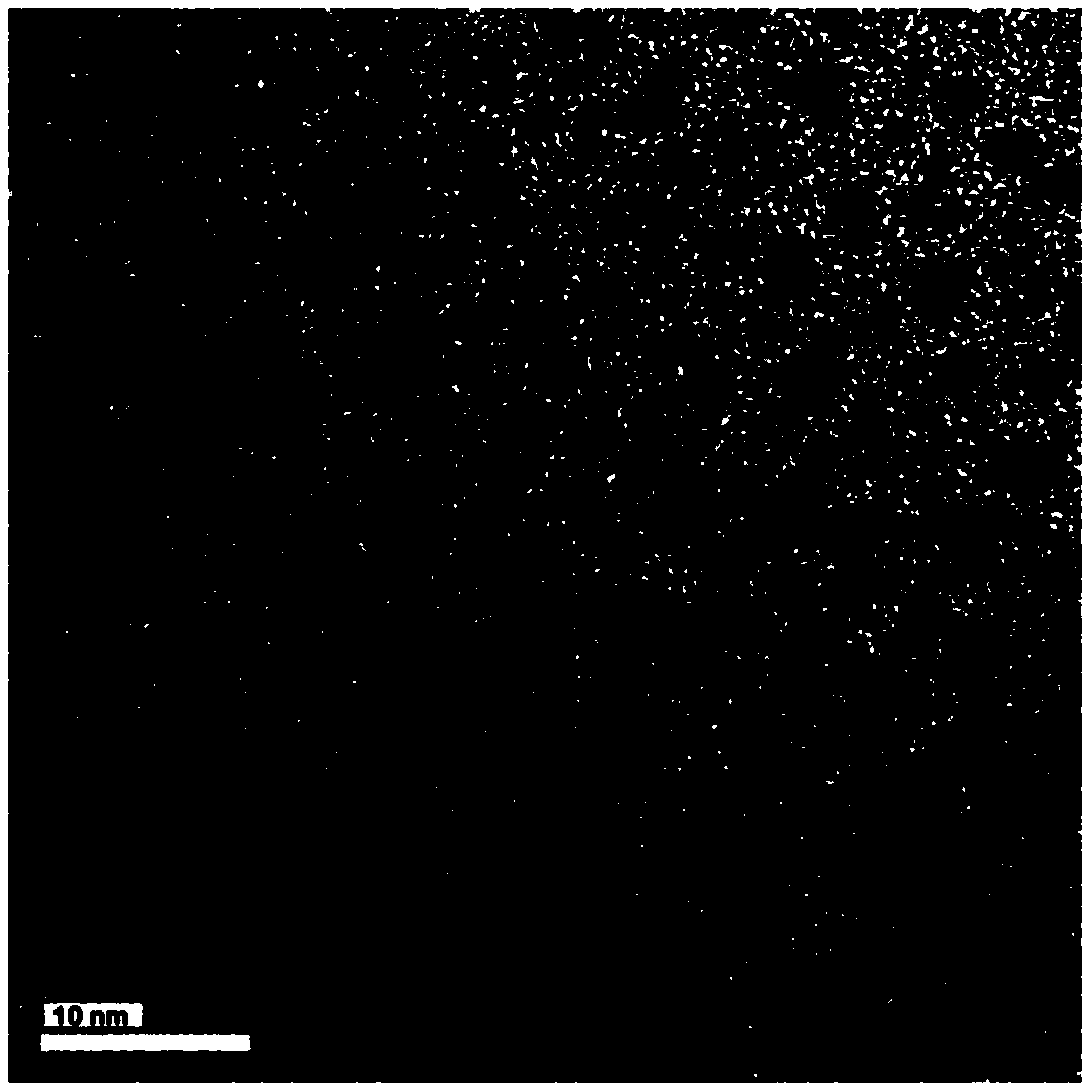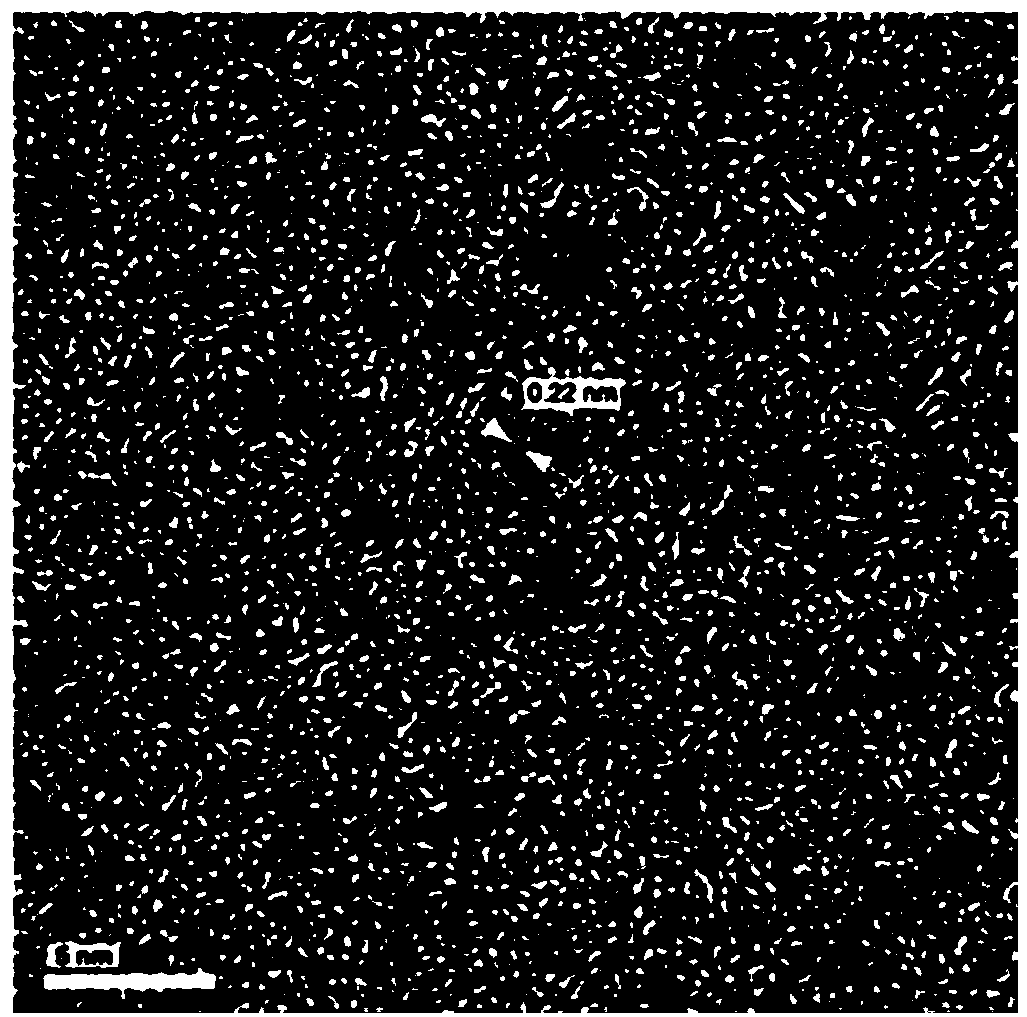Preparation method of fluorescent sensor for detecting aristolochic acid A
A fluorescent sensor and aristolochic acid technology, applied in the field of fluorescent sensors, can solve the problems of low identification of aristolochic acid A, complex detection method of aristolochic acid A, slow detection speed, etc., and achieve high sensitivity and controllable High performance and good stability
- Summary
- Abstract
- Description
- Claims
- Application Information
AI Technical Summary
Problems solved by technology
Method used
Image
Examples
Embodiment 1
[0031] Example 1: The preparation method of the fluorescence sensor for detecting aristolochic acid A is as follows:
[0032] (1) Add 250 mg of activated carbon powder, 22.5 mL of concentrated sulfuric acid, and 7.5 mL of concentrated nitric acid to a round bottom flask and reflux for 5 hours at 80°C. After cooling to room temperature, add 2 times the volume of the mixed acid to the reaction product plus ultrapure water , Adjust the pH to 13 with 6mol / L sodium hydroxide and put it in a hydrothermal reactor. After reacting at 160℃ for 14 hours, adjust the pH to 7.0 with 1mol / L sulfuric acid, and dialyze the neutral product with 1000 molecular weight The bag was dialyzed for 2 days, and the product in the dialysis bag was freeze-dried to obtain carbon quantum dots (CQDs). Transmission electron micrographs of carbon quantum dots ( figure 1 , 2 );
[0033] (2) Put 5mL, 10mg / mL ovalbumin (OVA) liquid and 1mL, 10mmol / L chloroauric acid solution into a beaker, sonicate for 5min and stir a...
Embodiment 2
[0035] Embodiment 2: The preparation method of the fluorescence sensor for detecting aristolochic acid A is as follows:
[0036] (1) Add 250 mg of activated carbon powder, 19.4 mL of concentrated sulfuric acid, and 5.6 mL of concentrated nitric acid to a round bottom flask at 90°C and reflux for 6 hours. After cooling to room temperature, add 3 times the volume of the mixed acid to the reaction product plus ultrapure water. Adjust the pH of the solution to 12 with 5mol / L sodium hydroxide and put it into a hydrothermal reactor. After reacting at 170°C for 13 hours, adjust the pH to 7.0 with 1mol / L sulfuric acid. Dialysis the neutral product with a 1000 molecular weight dialysis bag In 3 days, freeze-dry the product in the dialysis bag to obtain carbon quantum dot powders (CQDs);
[0037] (2) Put 20mL, 8mg / mL ovalbumin (OVA) solution and 5mL, 8mmol / L chloroauric acid solution into a beaker, sonicate for 10min and stir at room temperature for 25min, adjust the pH of the solution to 12...
Embodiment 3
[0039] Example 3: Experiment of OVA@AuNCs to enhance the fluorescence of CQDs
[0040] Gradually add 10μL 0.01mg / mL OVA@AuNCs solution to 2mL 0.2mg / mL CQDs solution, adding 10μL each time, it can be seen that the fluorescence intensity of CQDs solution reaches the highest value when it is added to 30μL OVA@AuNCs solution, and then gradually decreases ( Picture 9 ).
PUM
| Property | Measurement | Unit |
|---|---|---|
| Concentration | aaaaa | aaaaa |
Abstract
Description
Claims
Application Information
 Login to View More
Login to View More - R&D
- Intellectual Property
- Life Sciences
- Materials
- Tech Scout
- Unparalleled Data Quality
- Higher Quality Content
- 60% Fewer Hallucinations
Browse by: Latest US Patents, China's latest patents, Technical Efficacy Thesaurus, Application Domain, Technology Topic, Popular Technical Reports.
© 2025 PatSnap. All rights reserved.Legal|Privacy policy|Modern Slavery Act Transparency Statement|Sitemap|About US| Contact US: help@patsnap.com



